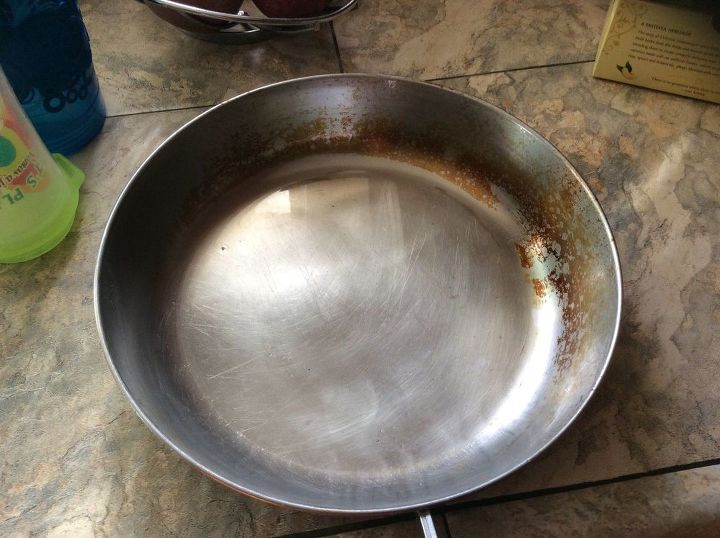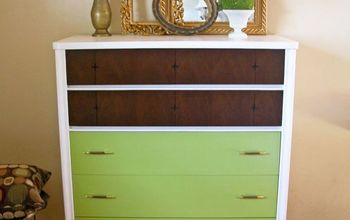Bathroom, mold & mildew

-
* I should add, this mold is growing up on the walls & ceiling. Not in the shower/tub, itself.
 Beth Recktenwald
on Sep 22, 2014
Helpful Reply
Beth Recktenwald
on Sep 22, 2014
Helpful Reply -
-
I am wondering if the exhaust fan needs replaced? Perhaps it is not strong enough to pull out the moisture? also does the exhaust feed to the outside?
 Just 4 You Organizing
on Sep 23, 2014
Helpful Reply
Just 4 You Organizing
on Sep 23, 2014
Helpful Reply -
-
What about something like this? http://www.rustoleum.com/product-catalog/consumer-brands/zinsser/cleaners-and-mold-and-mildew-proof-paints/perma-white-mold-and-mildew-proof-interior-paint
 Julie at Build, Sew, Reap
on Sep 23, 2014
Helpful Reply
Julie at Build, Sew, Reap
on Sep 23, 2014
Helpful Reply -
-
Many times those exhaust fans are not the right one for the job. I put in a 300CFM in and never have to worry about mold and mildew! It pulls the moisture out and I had wired it to the light switch because the kids would forget to turn it on. It may be a bit loud even when they go to the bathroom but it sure beats having moisture. Plus the noise masks any bathroom noises. lol I would install a new fan and spend the money for a 300 CFM my bathroom is about 60 sq ft. good luck
 The Garden Frog with C Renee
on Sep 23, 2014
Helpful Reply
The Garden Frog with C Renee
on Sep 23, 2014
Helpful Reply -
-
The mold is growing because the walls are cold and the humidity in the bath is condensing on those areas. Even with a high capacity fan as suggested this will not prevent this issue. You need to insulate the ceiling really well. If its an attic ceiling be sure to caulk all the edges where the wood meets the ceiling drywall or plaster. This assures that no air is flowing up into the attic around any openings. Be sure that the ceiling fan is properly vented to the outside and sealed tightly. Caulk or spray foam around the opening where the fan comes into contact with the ceiling. Install at least an R30 insulation or more on the ceiling to prevent it from getting cool. If possible you will also need to insulate the interior of the walls. Insulation contractors can do something that is called Dense Packing where they blow in insulation into the wall where it creates a great air seal and increases the R value within the wall. Once you have fixed this issue, you will need to properly fix the wall so no more mold can develop. A very good cleaning and sanding of the surface of the walls is suggested. Clean using a anti-microbial cleaner, not bleach! Bleach does nothing to prevent mold development, nor does it kill many kinds of it. It only lightens up the color making you think you have removed this. Ideally the drywall should be removed, but if you clean really well, let dry, then prime using a high end OIL based primer, NOT water based to seal the surface of the drywall this should prevent moisture from getting to the mold that has grown into the dry wall surface allowing it to start growing again. Follow up with a good quality paint. Ideally oil based but latex will work. This will cure your issues. To check your bath fan, place a piece of facial tissue over the fan when its running. If it stays in place and does not fall down, your fan is working. Close the door and windows and see if it still works. If not then upgrade to a larger fan.
 Woodbridge Environmental Tiptophouse.com
on Sep 24, 2014
Helpful Reply
Woodbridge Environmental Tiptophouse.com
on Sep 24, 2014
Helpful Reply -
-
Are you in a house or an apartment? We lived in a apartment and the walls in the bathroom were mouldy due to the apartment above ours having a leaky shower unit over our bathroom area. Water was seeping into the walls and ceiling from the apartment above. We also painted the walls and used an anti mould in the paint and the mould was back in no time due to this reason. It could also be condensation and a faulty fan causing this. Do you use the fan each time you run hot water for a shower or bath.
 Carole
on Sep 24, 2014
Helpful Reply
Carole
on Sep 24, 2014
Helpful Reply -
-
Have you tried to use Kilz on the walls, before repainting? If replacing the ceiling fan to a much stronger one and Kilz hasn't worked, then there is a much deeper problem. It may already be inside the walls and will keep coming back.
 Robin
on Sep 24, 2014
Helpful Reply
Robin
on Sep 24, 2014
Helpful Reply -
Related Discussions
How to clean a mirror without streaks?
Every time I clean my mirrors, they end up having tons of streaks and almost look worse than before I started. What could I use to clean them that won't leave streaks... See more
How to clean burns on stainless steel pans?
Help! I burned my pan. How do I clean stainless steel cookware that's been burned?
How to clean hardwood floors in the kitchen?
What is the best way to clean hardwood floors in the kitchen?
How to clean my kitchen cabinets from grease?
My kitchen cabinets are embarrassingly greasy. Please share your degreasing tips with me so I don't have to cringe every time I glance at my cabinets.
How do I clean a rusty bathtub?
There are several metallic stains and other stains that bleach and lime remover don't remove. Part of the ceramic coat is gone! Any help, please. I'm sure my landlord... See more


